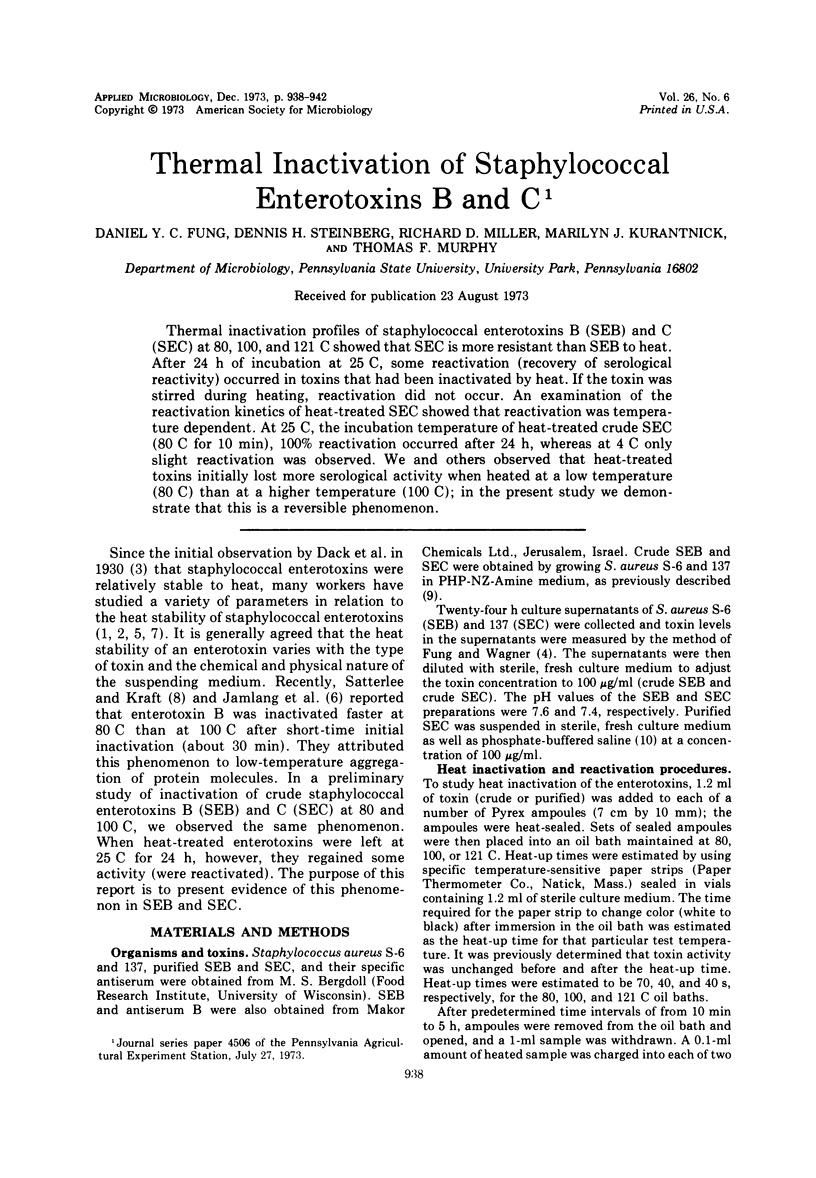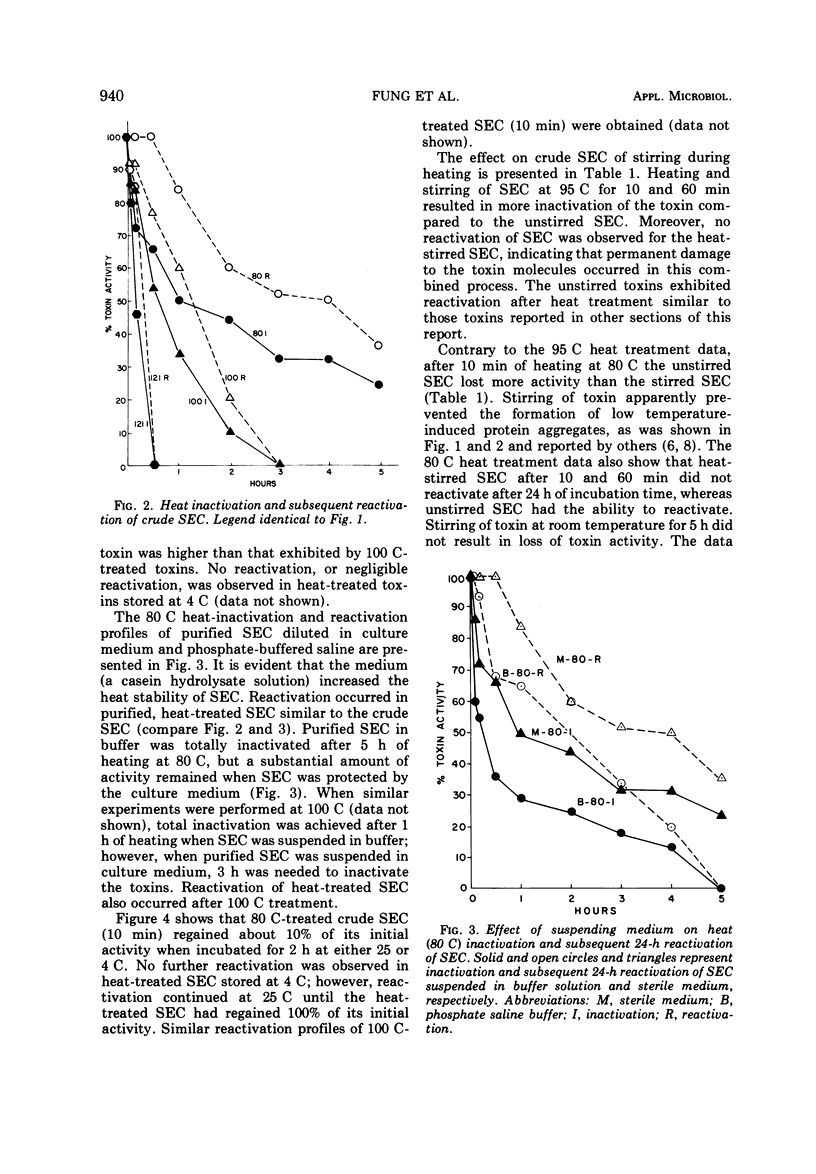Abstract
Thermal inactivation profiles of staphylococcal enterotoxins B (SEB) and C (SEC) at 80, 100, and 121 C showed that SEC is more resistant than SEB to heat. After 24 h of incubation at 25 C, some reactivation (recovery of serological reactivity) occurred in toxins that had been inactivated by heat. If the toxin was stirred during heating, reactivation did not occur. An examination of the reactivation kinetics of heat-treated SEC showed that reactivation was temperature dependent. At 25 C, the incubation temperature of heat-treated crude SEC (80 C for 10 min), 100% reactivation occurred after 24 h, whereas at 4 C only slight reactivation was observed. We and others observed that heat-treated toxins initially lost more serological activity when heated at a low temperature (80 C) than at a higher temperature (100 C); in the present study we demonstrate that this is a reversible phenomenon.
Full text
PDF




Selected References
These references are in PubMed. This may not be the complete list of references from this article.
- Avena R. M., Bergdoll M. S. Purification and some physicochemical properties of enterotoxin C, Staphylococcus aureus strain 361. Biochemistry. 1967 May;6(5):1474–1480. doi: 10.1021/bi00857a033. [DOI] [PubMed] [Google Scholar]
- Chu F. S., Thadhani K., Schantz E. J., Bergdoll M. S. Purification and characterization of staphylococcal enterotoxin A. Biochemistry. 1966 Oct;5(10):3281–3289. doi: 10.1021/bi00874a030. [DOI] [PubMed] [Google Scholar]
- Fung D. Y., Wagner J. Capillary tube assay for staphylococcal enterotoxins A, B, and C. Appl Microbiol. 1971 Mar;21(3):559–561. doi: 10.1128/am.21.3.559-561.1971. [DOI] [PMC free article] [PubMed] [Google Scholar]
- Hilker J. S., Heilman W. R., Tan P. L., Denny C. B., Bohrer C. W. Heat inactivation of enterotoxin A from Staphylococcus aureus in veronal buffer. Appl Microbiol. 1968 Feb;16(2):308–310. doi: 10.1128/am.16.2.308-310.1968. [DOI] [PMC free article] [PubMed] [Google Scholar]
- Jamlang E. M., Bartlett M. L., Snyder H. E. Effect of pH, protein concentration, and ionic strength on heat inactivation of staphylococcal enterotoxin B 1 . Appl Microbiol. 1971 Dec;22(6):1034–1040. doi: 10.1128/am.22.6.1034-1040.1971. [DOI] [PMC free article] [PubMed] [Google Scholar]
- Read R. B., Jr, Bradshaw J. G. Thermal inactivation of staphylococcal enterotoxin B in veronal buffer. Appl Microbiol. 1966 Jan;14(1):130–132. doi: 10.1128/am.14.1.130-132.1966. [DOI] [PMC free article] [PubMed] [Google Scholar]
- Satterlee L. D., Kraft A. A. Effect of meat and isolated meat proteins on the thermal inactivation of staphylococcal enterotoxin B. Appl Microbiol. 1969 Jun;17(6):906–909. doi: 10.1128/am.17.6.906-909.1969. [DOI] [PMC free article] [PubMed] [Google Scholar]
- Vandenbosch L. L., Fung D. Y., Widomski M. Optimum temperature for enterotoxin production by Staphylococcus aureus S-6 and 137 in liquid medium. Appl Microbiol. 1973 Mar;25(3):498–500. doi: 10.1128/am.25.3.498-500.1973. [DOI] [PMC free article] [PubMed] [Google Scholar]
- Weirether F. J., Lewis E. E., Rosenwald A. J., Lincoln R. E. Rapid quantitative serological assay of staphylococcal enterotoxin B. Appl Microbiol. 1966 Mar;14(2):284–291. doi: 10.1128/am.14.2.284-291.1966. [DOI] [PMC free article] [PubMed] [Google Scholar]


